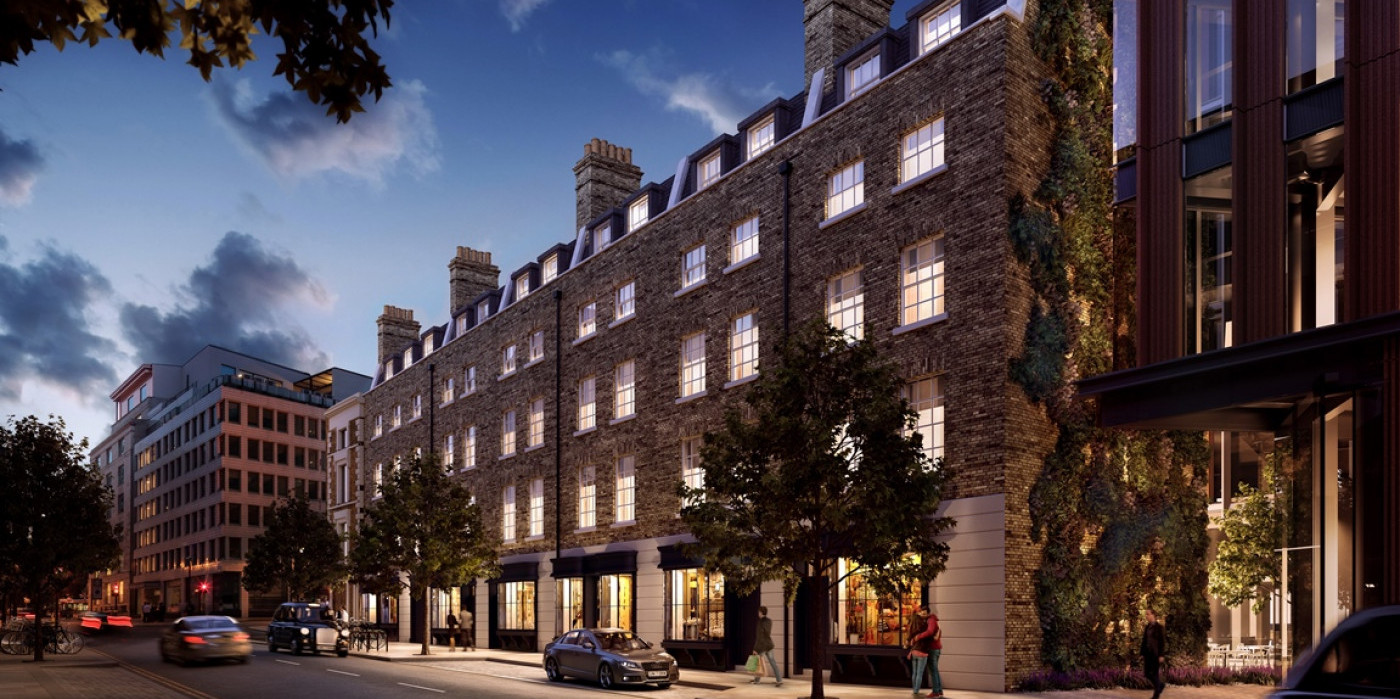
Lifestyle

13 March 2018
A brief biography of the architect who designed and built the Georgian terraces on Sun Street.
One Crown Place sits in an historic area of London, just outside the City boundary, yet within the highly fashionable City fringes. The area’s credentials go back to the 1700s when the City, bursting at the seams, looked for new areas to expand into. Two architects stood out in this development – George Dance the elder and his son George Dance the younger. The younger Dance was the more prolific, yet conversely far fewer examples of his great architectural work survive.
George Dance the younger was born in 1741 in Chiswell Street, a stone’s throw from One Crown Place. At the age of just 17, Dance set out by sea to spend four years abroad on the Grand Tour, a journey wealthy young Englishmen would take through France and Italy in search of art, culture and the roots of Western civilization. In Rome he mingled with architects and aged 19 received his first commission: a design for two marble chimney pieces. He was mesmerised by the Temple of Juniper and later the Temple of Vesta.
At the age of 22, he entered the competition for ‘A public Gallery for statues, pictures, etc.’ organised by the Academia at Parma, winning the gold medal. By the end of his time in Italy, Dance’s architectural style was established in the neo-classical form, characterised by unifying porticos or railings for terraced houses, sash windows and fine decorative motives.
In 1762 Dance returned to England with sketch books crammed with pictures. Whilst he was a primarily a neo-classicist, his versatility meant he was also adept in other styles. A mere 13 minutes’ walk from One Crown Place is an example of his interpretation of the Gothic style, the porch of the Guildhall in the City of London. In 1767 Dance introduced crescents – semi-circular rows of houses – and circuses – buildings encircling a central communal area – to London. Revolutionary at the time, but now common-place throughout London, Oxford Circus being an example.
An Act of Parliament of 1760 allowed the removal of the old City gates in the east of the City, opening up the lands around Moorgate to wholesale planned development for the first time. In 1773 the City planning committee approved Dance’s designs and the development of the area got underway. Dance also conceived the idea of the ‘oval amphitheatre’, which materialised as Finsbury Square. This was to have houses with matching façades of
stock brick and balconettes of delicate ironwork at the first-floor windows. By the 1790s almost every street was fringed with houses, with shops at ground floor level, as was the case in Sun Street.
George Dance the younger died peacefully in 1825 aged 83. The question is why this remarkable architect is not as widely known as his contemporaries Robert Adam and William Chambers. Part of the answer is that the mundane aspect of his job Clerk to the City Works took up much of his time. At the same time, many of his buildings have since been demolished. And that is why the conservation of the terraces in Sun Street (originally Crown Street), now part of the One Crown Place development is so important, as they are examples of Dance’s designs in the area. This significant row of houses is currently being restored and will open as a boutique hotel in 2020.
Read more about the One Crown Place hotel here.
To learn more and book a tour of the area please contact paula.cooze@btinternet.com
SHARE ARTICLE